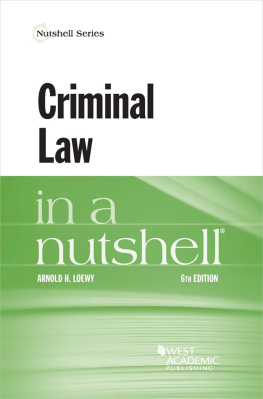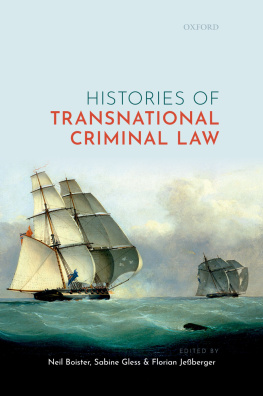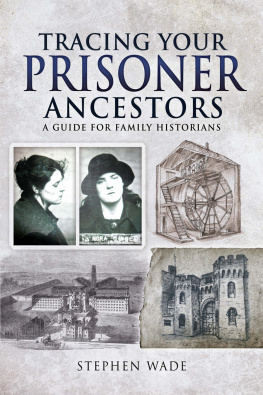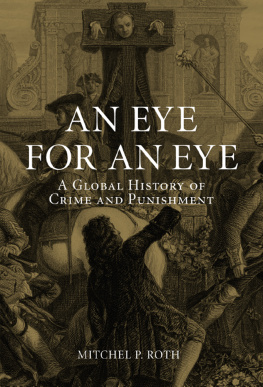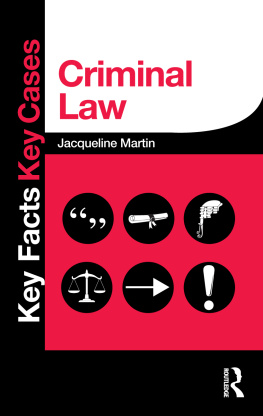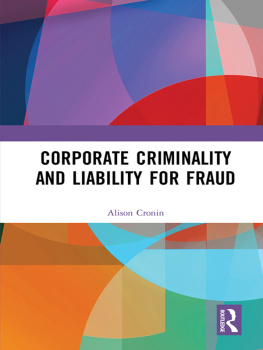West Academic Publishings Law School Advisory Board
Jesse H. Choper
Professor of Law and Dean Emeritus
University of California, Berkeley
Joshua Dressler
Distinguished University Professor Emeritus
Michael E. Moritz College of Law, The Ohio State University
RENE M c DONALD HUTCHINS
Dean and Joseph L. Rauh, Jr. Chair of Public Interest Law
University of the District of Columbia David A. Clarke School of Law
Yale Kamisar
Professor of Law Emeritus, University of San Diego
Professor of Law Emeritus, University of Michigan
Mary Kay Kane
Professor of Law, Chancellor and Dean Emeritus
University of California, Hastings College of the Law
Larry D. Kramer
President, William and Flora Hewlett Foundation
Jonathan R. Macey
Professor of Law, Yale Law School
DEBORAH JONES MERRITT
Distinguished University Professor, John Deaver Drinko/Baker &
Hostetler Chair in Law
Michael E. Moritz College of Law, The Ohio State University
Arthur R. Miller
University Professor, New York University
Formerly Bruce Bromley Professor of Law, Harvard University
Grant S. Nelson
Professor of Law Emeritus, Pepperdine University
Professor of Law Emeritus, University of California, Los Angeles
A. Benjamin Spencer
Justice Thurgood Marshall Distinguished Professor of Law
University of Virginia School of Law
James J. White
Robert A. Sullivan Professor of Law Emeritus
University of Michigan
Criminal Law
In a nutshell
Sixth Edition
ARNOLD H. LOEWY
George Killam Chair in Criminal Law
Texas Tech University School of Law

The publisher is not engaged in rendering legal or other professional advice, and this publication is not a substitute for the advice of an attorney. If you require legal or other expert advice, you should seek the services of a competent attorney or other professional.
Nutshell Series, In a Nutshell and the Nutshell Logo are trademarks registered in the U.S. Patent and Trademark Office.
West, a Thomson business, 1975, 1987, 2000, 2003
2009 Thomson Reuters
2020 LEG, Inc. d/b/a West Academic
444 Cedar Street, Suite 700
St. Paul, MN 55101
1-877-888-1330
West, West Academic Publishing, and West Academic are trademarks of West Publishing Corporation, used under license.
Printed in the United States of America
ISBN: 978-1-64020-193-4
To Punky
Preface
This book is designed to be a succinct exposition of substantive criminal law to which a troubled student can turn for reliable guidance. The troubled student whom I have endeavored to guide is one who finds himself in that situation in spite of his diligent effort to succeed. I have made no special attempt to aid those students who have not made a substantial effort to master the material during the semester (although candor does compel me to acknowledge that some of these students may use this book, with a few of the brighter ones even passing criminal law because of it.)
The book is also designed to serve the untroubled criminal law student (I usually find at least one or two per class) in two ways. First, for the student who likes to spend most of her study time analyzing cases and/or law review articles, but would like to see a brief textual treatment of each days assignment, this book provides that treatment. And second, the book provides an overview or perspective to aid the student in synthesizing an entire semesters worth of material.
Although it should go without saying, Ill say it anywaythis book is not a substitute for individual analysis. One who does not develop the capacity to analyze problems will not be saved by this or any other book when he is asked to analyze a problem that neither he nor the book had previously considered.
Teachers of and books about criminal law vary widely in regard to the order in which they present the material. This book is divided into seven parts. Part I develops the purposes of punishment, an understanding of which is essential to the study of criminal law. Part II develops those specific crimes which, in the opinion of the author, need developing. In addition, it analyzes causation and self defense. Part III is concerned with the ingredients of all crimes (mens rea and actus reus), while Part IV discusses special defenses. Part V examines burden of proof and presumptions. Part VI discusses inchoate and group criminality, and Part VII analyzes limitations on the criminal law. Finally, the book concludes with a short perspective on the study of criminal law.
Throughout this book in case citations, the following abbreviations have been employed: C=Commonwealth, D.P.P.=Director of Public Prosecutions, P=People, R=Regina or Rex, S=State, and U.S.=United States. The American Law Institutes Model Penal Code, which is frequently cited in this book, has been abbreviated M.P.C. Unless otherwise indicated, all M.P.C. citations are to the proposed official draft. Whenever an M.P.C. cite is used, the section will be preceded by the M.P.C. designation ( e.g. M.P.C. 210.6 substitutes aggravating and mitigating circumstances for degrees of murder). Hopefully, this will avoid confusion between references to M.P.C. sections and the frequent internal nutshell section references that are made throughout the book.
Because this is not intended to be a source book, case citations are illustrative rather than exhaustive and secondary sources (other than the M.P.C.) have been intentionally omitted save for those few instances where their inclusion was unavoidable. Without intending to disparage the many outstanding works in the field of criminal law that I have found helpful, I would like to especially note the aid I received from reading LaFave and Scott, Handbook on Criminal Law , and Dressler, Understanding Criminal Law .
In the more than fifty years since I began teaching criminal law, I have received many helpful insights into the criminal law from my colleagues and students. Some of these insights are in this book. In addition, I would like to thank the several secretaries and research assistants who at one time or another have aided me in the preparation of the book. Finally, I would like to particularly thank seven research assistants from three generations of law students. The first edition (1975) was enhanced by the efforts of Kathleen C. Barger, Jack Drum and A. W. Turner, Jr. Joanna G. Hansen and Timothy C. Holm contributed significantly to the second edition. For the third edition, I thank Dameron Page and Deborah Stencel. For the fourth edition, I am grateful to William Cross and for the fifth edition I am grateful to Kyle Winter. Finally for the sixth edition, I thank Elliott ODay.
A.H.L.
Lubbock, Texas
December 2019
Outline
4.04 Post-Penetration Withdrawal of
Consent
. Other Crimes Against the
Person
. Self-Defense and Related
Defenses
F. Intent to Permanently Deprive the Person Entitled to Possession of
That Possession
B. Larceny by an Employee
(Servant)
8.05 Limitations on Liability Without
Fault
9.03 Actus Reus as a Constitutional
Minimum
9.04 Concurrence of Actus Reus and Mens
Rea
12.01 Relevance to Substantive Criminal
Law
12.05 Contraction of the Rule (Patterson v.
New York)
. Presumptions and
Inferences
16.04 The Object Which Renders a
Conspiracy Criminal
16.05 Agreementthe Actus Reus of
Conspiracy
16.06 Scope of the AgreementOne
Conspiracy or Many

